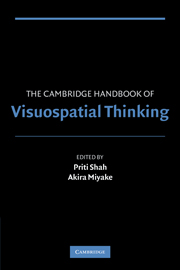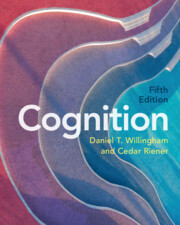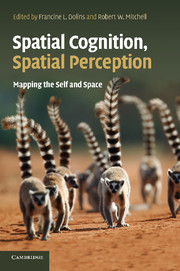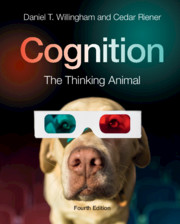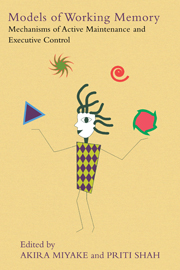The Cambridge Handbook of Visuospatial Thinking
Visuospatial thinking encompasses a wide range of thinking processes concerning space, whether it be navigating across town, understanding multimedia displays, reading an architectural blueprint or a map. Understanding it and in particular, how people represent and process visual and spatial information, is relevant not only to cognitive psychology but also education, geography, architecture, medicine, design, computer science/artificial intelligence, semiotics and animal cognition. This book presents a broad overview of research that can be applied to basic theoretical and applied/naturalistic contexts.
- Overview of the interdisciplinary field of visuospatial thinking with 12 integrative chapters that are extensively cross-referenced
- These chapters focus on higher level visuospatial thinking and there are no other books that currently do so
- Balanced treatment of both basic and applied work
Reviews & endorsements
"Collection of 12 articles, each with an extensive bibliography, that aims to present a broad overview of research, focusing on higher-level visuospatial thinking from visual imagery to diagrammatic reasoning. Useful for those in design, architecture, medicine, semiotics, HCI and geography."
--Design Issues
Product details
July 2005Paperback
9780521001731
580 pages
227 × 153 × 30 mm
0.762kg
75 b/w illus. 8 tables
Available
Table of Contents
- 1. Functional significance of visuospatial representations Barbara Tversky
- 2. Visuospatial images Daniel Reisberg and Friderike Heuer
- 3. Disorders of visuospatial working memory Robert Logie and Sergio Della Sala
- 4. Individual differences in spatial abilities Mary Hegarty and David Waller
- 5. Sex differences in visuospatial abilities: more than meets the eye Diane F. Halpern and Marcia L. Collear
- 6. Development of spatial competence Nora S. Newcombe and Amy E. Learmonth
- 7. Navigation Daniel R. Montello
- 8. Mapping the understanding of understanding maps Holly A. Taylor
- 9. Spatial situation models Mike Rinck
- 10. Design applications of visual spatial thinking: the importance of frame of reference Christopher D. Wickens, Michele Vincow and Michele Yeh
- 11. The presentation and comprehension of graphically-presented data Priti Shah, Eric G. Freedman and Ioanna Vekiri
- 12. Multimedia learning: guiding visuospatial thinking with instructional animation Richard E. Mayer.

